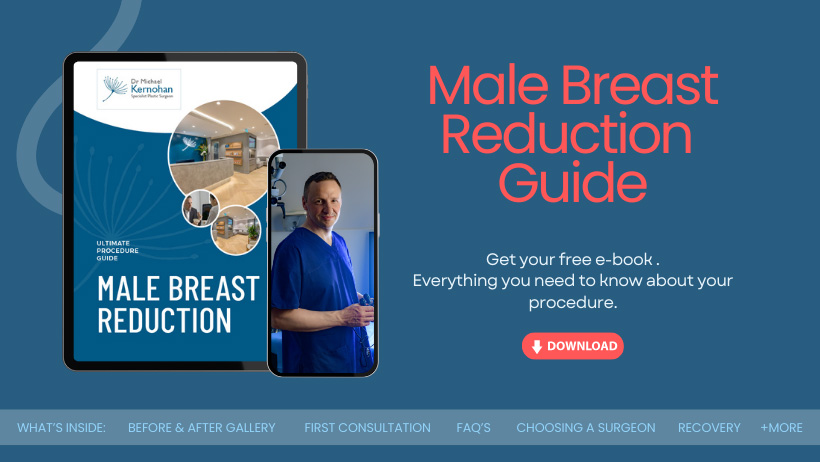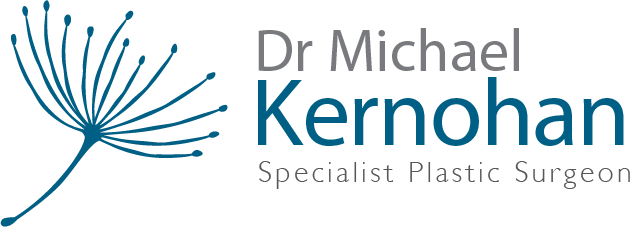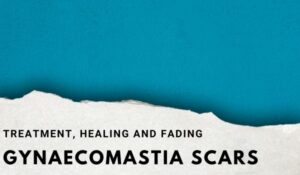Healing Stages and Effective Treatments for Gynaecomastia Scars
Gynaecomastia, a term that might seem daunting to understand, refers to the enlargement of breast tissue in males. This condition is often a source of discomfort; however, understanding it can help you manage it effectively. Gynaecomastia results from an imbalance in the hormones estrogen and testosterone and can affect one or both breasts, sometimes unevenly. Contrary to popular belief, true gynaecomastia is not caused by obesity. Instead, it is a distinct condition that can occur in healthy, lean males as well. It is often seen during infancy and puberty when hormonal changes surge. In older men, it often results from normal hormonal changes due to ageing or from the use of certain medications. Understanding gynaecomastia is the first step to addressing it. Once you understand the root causes and implications, you can explore the available treatment options. This includes lifestyle changes, medication, or in more severe cases, surgery.
Dr Michael Kernohan is a Specialist Plastic Surgeon based in Sydney, Australia. He regularly performs Skin Cancer, Face, Breast and Body Surgery. Dr Kernohan is committed to achieving optimal results by employing different techniques in plastic surgery. His range of services includes facial surgery, body surgery, breast surgery, and other plastic surgery procedures such as cancer surgery, trauma and reconstructive surgery.
Take the Quiz
The Gynaecomastia Surgery Process
If you have tried other treatments and they have not helped, your doctor might recommend surgery. The gynaecomastia surgery process involves removing the excess breast tissue and reshaping the chest to address its appearance. There are two main types of surgery: liposuction, which removes the fat but not the breast gland tissue itself, and mastectomy, which removes the breast gland tissue.
The surgery process begins with a consultation with Dr Kernohan, where he will assess your condition, discuss the surgical options available for you, and explain the possible risks and complications. This is your opportunity to ask questions and understand the process thoroughly.
On the day of the surgery, you’ll be given general anaesthesia, and the procedure will take about 90 minutes. After the surgery, you may experience some pain and swelling, but these can be managed with medication. You will also need to wear an elastic pressure garment for a few weeks to manage swelling.
What are Gynaecomastia Scars?
Now that you understand the process of gynaecomastia surgery, let’s dig into the aftermath – the scars. Gynaecomastia scars are a common concern for many individuals considering surgery. These are the visible marks left on the skin after the surgical incisions have healed.
The appearance of gynaecomastia scars can vary based on several factors, such as the type and extent of the surgery, your body’s healing process, and the care you take of the surgical area post-operation. In some cases, these scars can be quite noticeable and might affect your level of satisfaction with the procedure.
However, it’s important to remember that scarring is a natural part of the healing process. While the scars may initially be red and noticeable, they are likely to fade over time and become less noticeable.
Healing Stages of Gynaecomastia Scars
Understanding the healing stages of gynaecomastia scars can give you a sense of what to expect. The healing process is divided into three key stages: the inflammatory phase, the proliferative phase, and the remodelling phase.
The inflammatory phase occurs immediately after the surgery and lasts a few days. During this stage, you may experience redness, swelling, and discomfort. The proliferative phase, which can last several weeks, is when your body starts to produce collagen to rebuild the tissue.
The final stage, the remodelling phase, can take several months to a year. This is when the scar begins to mature and fade, becoming less red and more like your normal skin tone. This is also the stage when scar treatment is most effective.
Male Breast Reduction Surgery Guide

How to Manage Scars after Gynaecomastia Surgery
Managing scars after gynaecomastia surgery is a common goal for many patients. There are several steps you can take to help reduce the appearance of these scars. It’s important to follow Dr Kernihan’s post-operative care instructions. This often includes avoiding strenuous activity and protecting the surgical area from the sun.
Maintaining a healthy lifestyle can aid your body’s natural healing process. This includes eating a balanced diet, getting regular exercise once cleared by your plastic surgeon, and avoiding smoking and alcohol, which can impede healing.
Using topical treatments such as silicone sheets or gels can help to reduce the appearance of gynaecomastia scars. These create a protective barrier over the scar, keeping it hydrated and promoting healing.
Options for Gynaecomastia Scars Treatment
There are many options available when it comes to gynaecomastia scars treatment. According to experts, one of the most effective treatments is silicone sheeting or gel. These products are clinically proven to improve the appearance of scars by reducing their size, colour, and texture.
On top of this, Dr Kernohan also recommends laser therapy as a treatment for gynaecomastia scars. This involves using concentrated light to remove or reshape scar tissue, which may help to reduce the size and improve the appearance of the scar.
It’s important to remember that everyone’s body is different, and what works for one person may not work for another. Therefore, it’s important to consult with Dr Kernohan before starting any scar treatment.
Top Products and Methods for Fading Gynaecomastia Scars
Different products and methods available can help minimise gynaecomastia scars. As mentioned before, silicone sheets and gels are among the top recommended products. They are easy to use, with many people seeing results within a few months of regular use.
Another effective product is scar reduction cream. These creams often contain ingredients like onion extract and vitamin E, which can help to reduce scar tissue and improve the skin’s appearance.
In terms of methods, massage is a simple yet effective way to fade gynaecomastia scars. Massaging the scar can help to break down the scar tissue and improve circulation to the area, which can aid in healing.
Where to Seek Assistance for Gynaecomastia Scars
If you need treatment for your gynaecomastia scars, it’s important to know that help is available. You can start by speaking with your plastic surgeon. They can provide expert advice on the best treatment options for you and guide you through the process.
In addition to medical professionals, you might also consider seeking help from a support group. Connecting with others who have gone through similar experiences can provide comfort and practical advice. Remember, you’re not alone in this journey.
Gynaecomastia and its resultant scars can be challenging. With understanding, patience, and the right guidance, you can effectively manage the scars and get optimal results from your surgery.
FAQs about Gynaecomastia Scars
How visible are the scars from gynaecomastia treatment?
- The visibility of scars from gynaecomastia treatment largely depends on the surgical technique used and the individual’s healing process. In most cases, incisions are made in specific locations to minimise visible scarring. Over time, these scars often fade and become less noticeable. It’s important to remember that individual healing varies, and some people may experience more visible scarring than others.
How to massage scar tissue after gynaecomastia treatment?
- Massaging scar tissue after gynaecomastia treatment can help to soften and flatten the scar, improving its appearance over time. Start by applying a non-perfumed lotion or oil to your fingers to reduce friction. Then, using a circular motion, gently massage the scar and the surrounding tissue. This should be done for a few minutes each day, once the wound has fully healed and with the approval of your plastic surgeon.
Does gyno surgery hurt?
- Gynaecomastia surgery is performed under general anaesthesia, so you won’t feel pain during the procedure. After the surgery, it’s normal to experience some discomfort and swelling, but this can be managed with prescribed pain medication. The level of post-operative pain can vary from person to person, but most patients find it manageable and temporary.
What is the gyno surgery recovery time?
- The recovery time for gynaecomastia surgery can vary depending on the extent of the surgery and the individual’s overall health. Generally, patients can expect to return to non-strenuous work within a week or two. Full recovery and return to strenuous activities or exercise typically takes about 6 weeks. Dr Kernohan will provide you with specific recovery guidelines based on your personal situation.
Can gynaecomastia surgery have bad results?
- As with any surgical procedure, gynaecomastia surgery carries some risks, which could potentially lead to unsatisfactory results. These risks may include infection, bleeding, poor wound healing, changes in nipple or breast sensation, or asymmetry in the chest. Choosing a skilled and experienced specialist plastic surgeon can significantly minimise these risks. It’s important to discuss your expectations and any concerns you may have with your plastic surgeon prior to the procedure to ensure you have a realistic understanding of the potential outcomes.
Further Reading about Plastic Surgery with Dr Kernohan
- Read Dr Kernohan’s Gynaecomastia Surgery Page
- Read Dr Kernohan’s Abdominoplasty Surgery Page
- Read Dr Kernohan’s Post Weight Loss Surgery Page
- Read Dr Kernohan’s Recovery after Surgery Page
- Read Dr Kernohan’s Blog on What Causes Enlarged Breasts in Men?
- Read Dr Kernohan’s Blog on What causes Gynaecomastia?
- Read Dr Kernohan’s Blog on Will Medicare Cover My Gynaecomastia Surgery?
- Read Dr Kernohan’s Blog on Plastic Surgery for Men in Sydney
- Read Dr Kernohan’s Blog on How to Prepare for Gynaecomastia Surgery
- Read Dr Kernohan’s Blog on Tips for Recovery after Gynaecomastia Surgery
- Read Dr Kernohan’s Blog on When Can I Exercise after Gynaecomastia Surgery?










